28 Photographs That Capture Defining Moments in American History
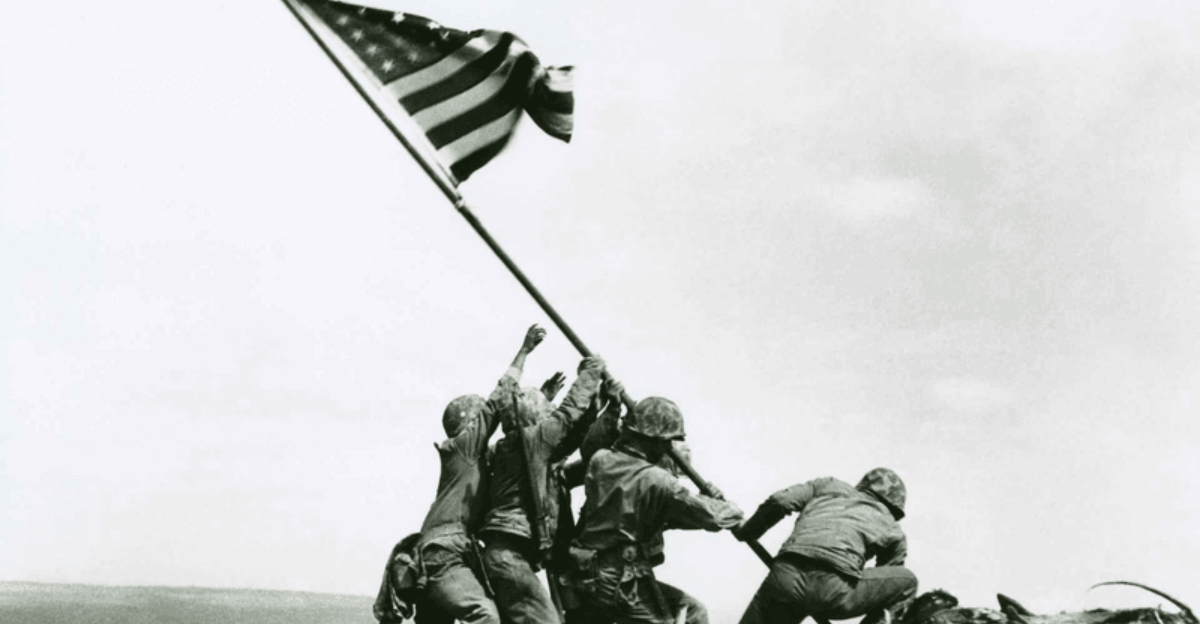
Photographs possess a unique power to halt time, preserving fleeting instances that weave the narrative of a nation.
Within America’s rich history, certain visuals stand out, not just for their striking composition but for the profound events they embody. They stand as enduring records of the challenges, victories, and shifts that have shaped the nation.
This collection of 28 photographs encourages contemplation of the moments that have molded, and continue to guide, the American story.
1. V-J Day in Times Square (1945) – Alfred Eisenstaedt
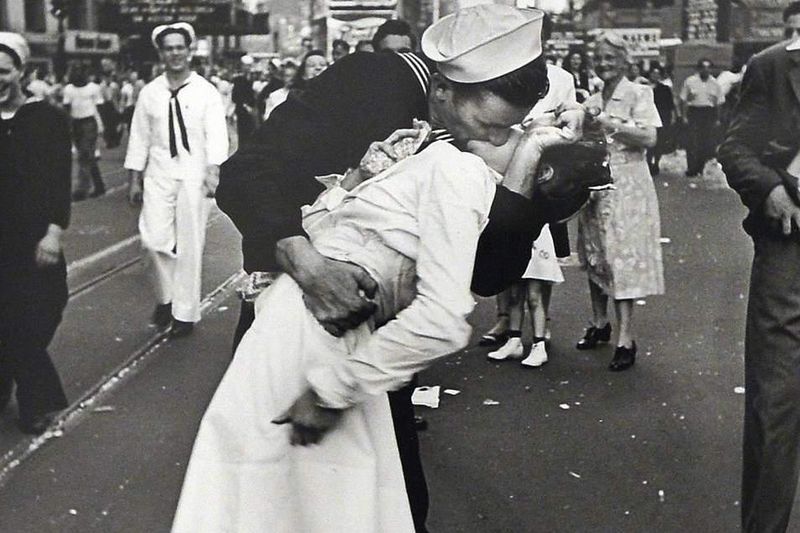
On August 14, 1945, as Japan’s surrender sparked nationwide celebrations, Alfred Eisenstaedt captured a U.S. Navy sailor joyfully kissing a dental assistant in Times Square.
Published in Life magazine, this spontaneous moment became a timeless emblem of World War II’s end, radiating relief and elation. The image still conveys the unbridled happiness of peace restored.
2. Raising the Flag on Iwo Jima (1945) – Joe Rosenthal

Joe Rosenthal’s iconic shot shows six U.S. Marines raising the American flag on Mount Suribachi during World War II. A symbol of unity and grit, it inspired the Marine Corps War Memorial and uplifted spirits at home.
Widely reproduced, it captures not only a battlefield triumph but also a nation’s collective resolve.
3. The Terror of War (1972) – Nick Ut
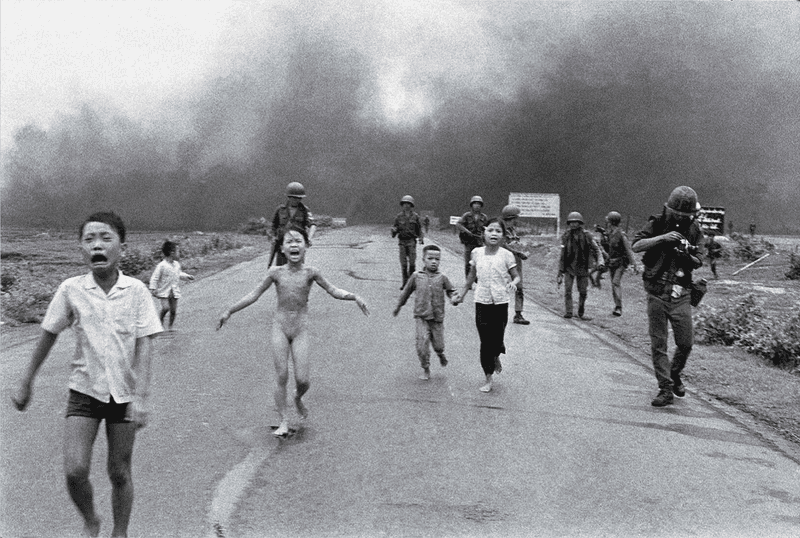
Nick Ut’s wrenching image of 9-year-old Kim Phúc fleeing a napalm strike during the Vietnam War, her clothes burned off and face etched with agony, won a Pulitzer Prize.
Its raw depiction of suffering shifted public views, fueling anti-war sentiment. The photograph endures as a stark testament to the human toll of conflict.
4. Lunch Atop a Skyscraper (1932) – Charles C. Ebbets
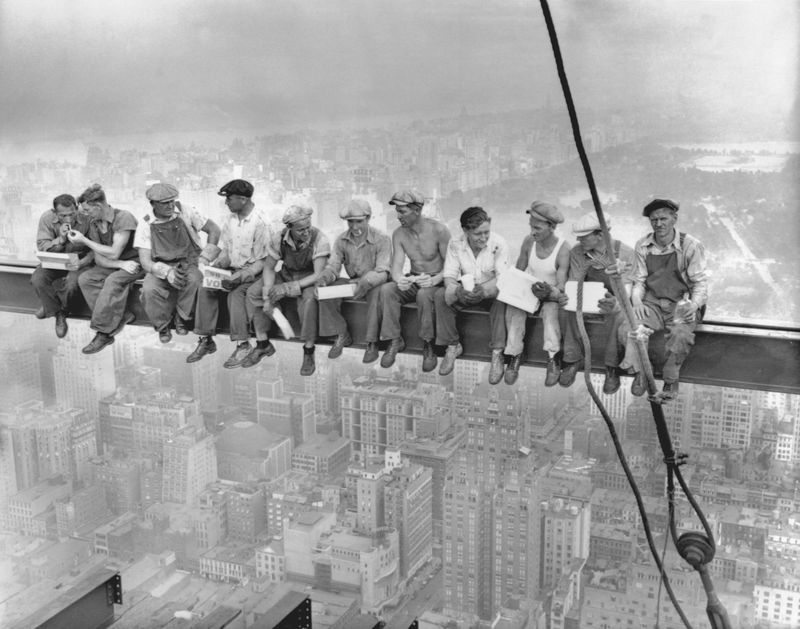
Charles C. Ebbets’ vivid image portrays eleven workers casually dining on a steel beam above New York City during the RCA Building’s construction.
It reflects the boldness of laborers and the era’s urban growth, embodying the tenacity of the Great Depression workforce.
5. Martin Luther King Jr. Delivers “I Have a Dream” (1963) – Unknown Photographer

Images of Dr. Martin Luther King Jr. addressing a vast crowd at the 1963 March on Washington capture a cornerstone of the Civil Rights Movement.
Taken from the Lincoln Memorial, they highlight the strength of nonviolent protest and the pursuit of equality.
Dr. King’s vision continues to inspire the fight for justice.
6. Ruby Bridges Attends School (1960) – Associated Press

A striking photo shows six-year-old Ruby Bridges, the first Black child to integrate a New Orleans school, walking calmly with U.S. Marshals.
Her quiet courage amid resistance became a symbol of the Civil Rights Movement’s resolve. The image reflects a nation grappling with change and the bravery of its youngest pioneers.
7. The Kent State Shooting (1970) – John Filo
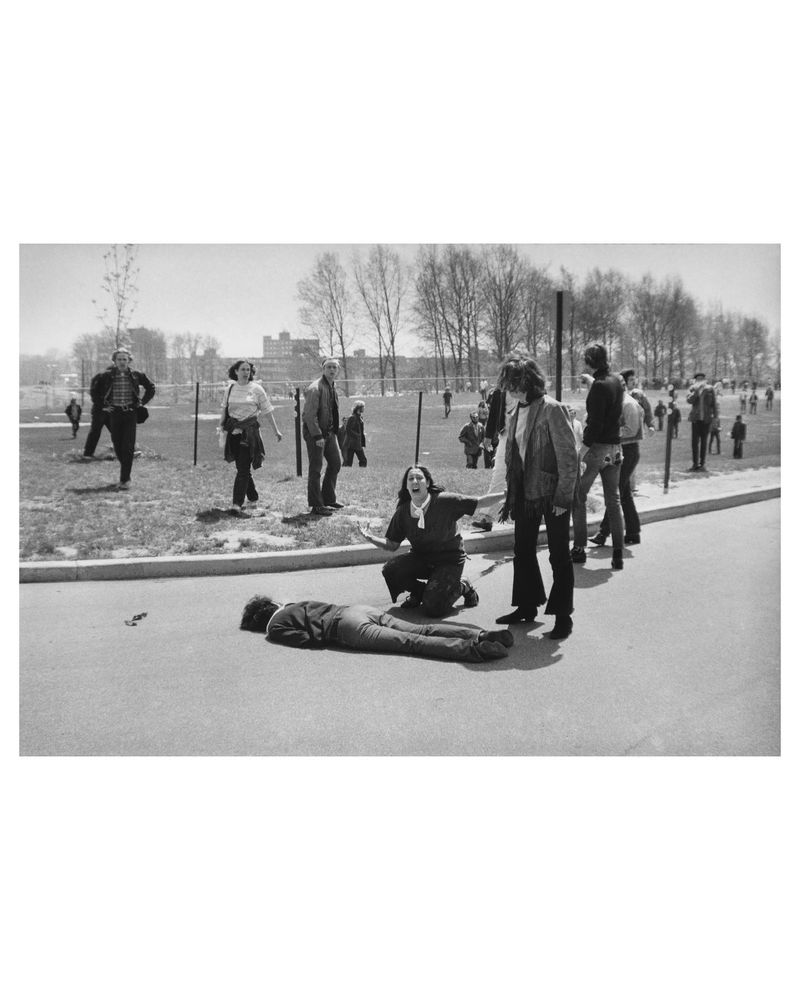
John Filo’s Pulitzer-winning photo captures 14-year-old Mary Ann Vecchio kneeling in anguish over Jeffrey Miller, shot by the National Guard during a Kent State protest.
Its raw emotion defined the Vietnam War’s domestic turmoil, underscoring the cost of dissent and the power of student voices.
8. Migrant Mother (1936) – Dorothea Lange

Dorothea Lange’s portrait of Florence Owens Thompson with her children during the Great Depression became a hallmark of Dust Bowl hardship.
Its haunting gaze spurred government aid and remains a timeless symbol of resilience amid economic despair, evoking the endurance of America’s downtrodden.
9. Elvis Presley Gets His Army Haircut (1958) – Bettmann Archive
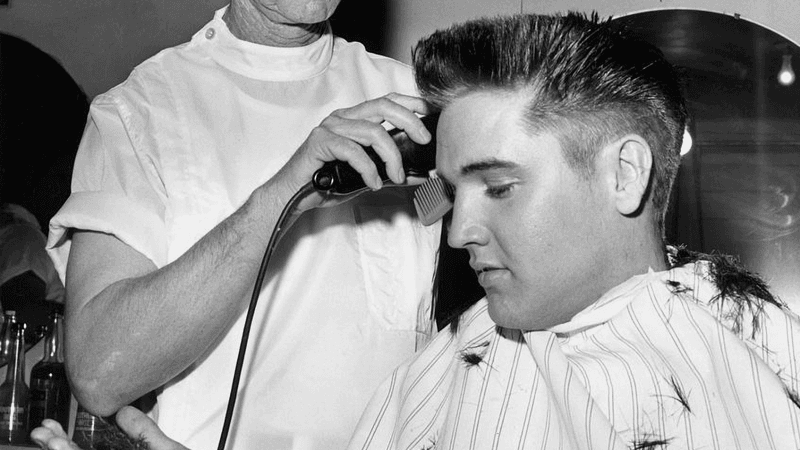
A photo of Elvis Presley, grinning before his Army buzz cut, marked a cultural shift as the rock icon embraced national duty. It bridged youthful rebellion and civic responsibility, reshaping his career.
The image captures a moment of charisma meeting obligation.
10. John F. Kennedy Jr. Salutes His Father’s Coffin (1963) – Stan Stearns

Stan Stearns’ poignant image of young John F. Kennedy Jr. saluting his father’s casket during the funeral procession encapsulates a nation’s grief.
The child’s innocent gesture amid tragedy blends personal loss with public mourning, leaving an indelible mark on presidential history.
11. The Moon Landing (1969) – NASA / Neil Armstrong
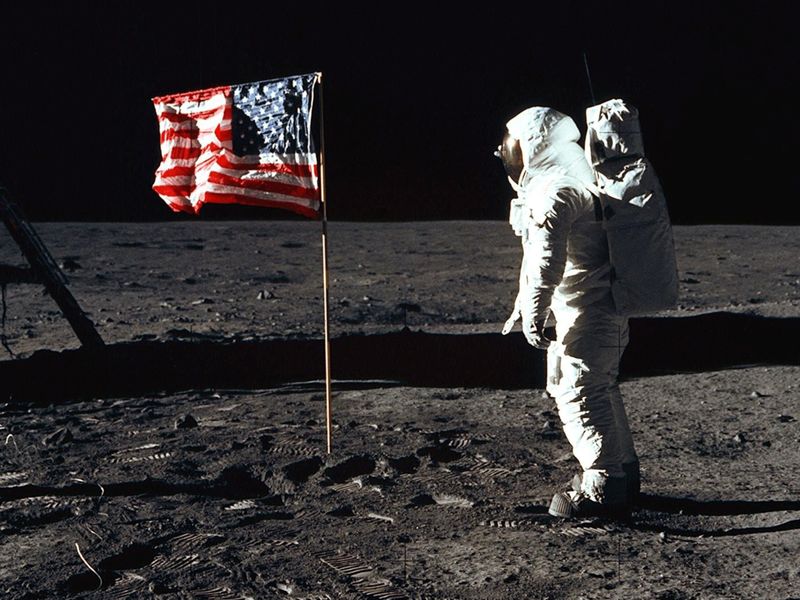
This iconic photo confirmed humanity’s lunar leap. A pinnacle of the space race, it showcases American innovation.
The image remains a beacon of exploration and technological triumph.
12. The Hindenburg Disaster (1937) – Sam Shere
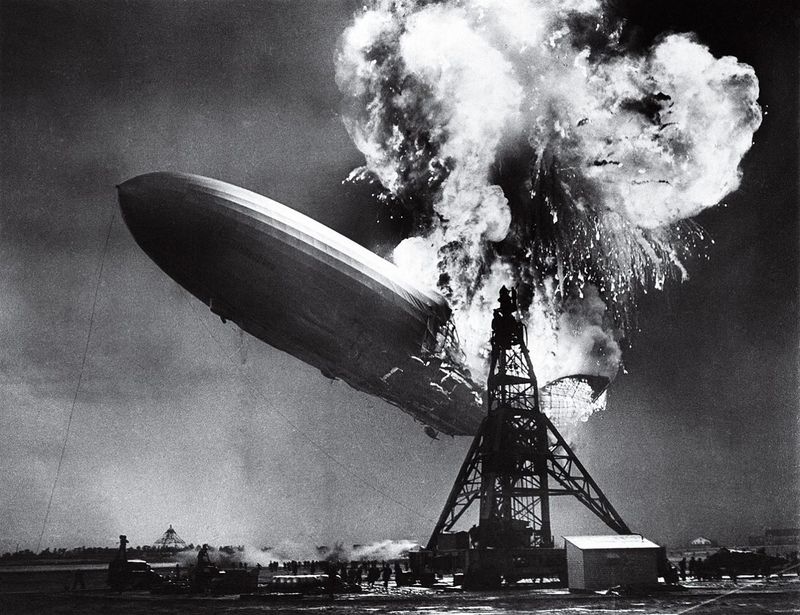
Sam Shere’s dramatic shot of the Hindenburg airship bursting into flames in New Jersey marked the end of airship travel. The fiery wreckage’s fall reshaped aviation safety standards.
The image endures as a sobering reminder of early flight’s risks.
13. The Selma to Montgomery March (1965) – James Karales

James Karales’ image of marchers with American flags on an Alabama road during the Selma to Montgomery march radiates unity and resolve.
It fueled support for the Voting Rights Act, symbolizing the relentless push for equality and justice.
14. Muhammad Ali Stands Over Sonny Liston (1965) – Neil Leifer
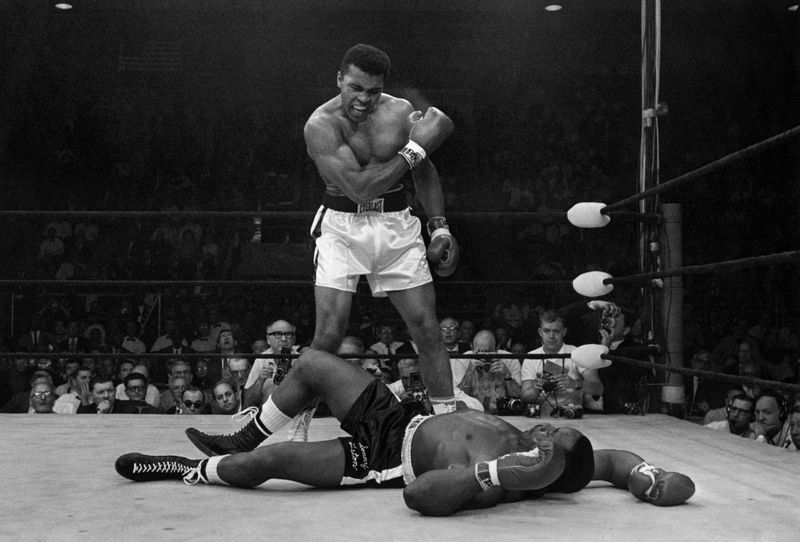
Neil Leifer’s shot of Muhammad Ali towering over a fallen Sonny Liston after a knockout captures a defining sports moment.
Ali’s commanding presence reflects his outsized charisma and cultural impact, cementing his legacy as a symbol of defiance and excellence.
15. The Challenger Explosion (1986) – NASA/Reuters

The image of the space shuttle Challenger disintegrating 73 seconds after launch, leaving a split smoke trail, shocked the world.
The loss of all seven crew members, including teacher Christa McAuliffe, prompted NASA safety reforms. It underscores the perils of space exploration.
16. The Assassination of Lee Harvey Oswald (1963) – Bob Jackson
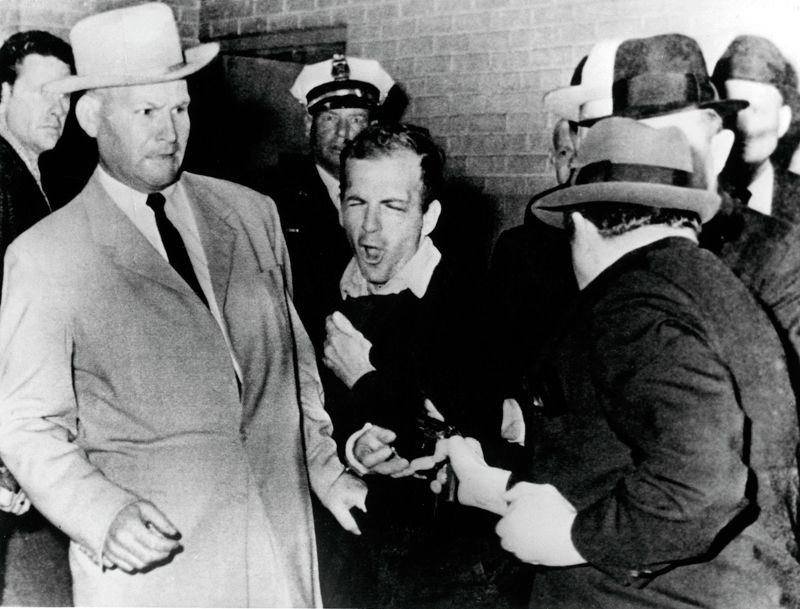
Bob Jackson’s photo captures Jack Ruby shooting Lee Harvey Oswald, accused of assassinating President Kennedy, on live TV.
The shocking moment fueled conspiracy theories and reflects the era’s chaos, highlighting the fragility of justice in a turbulent time.
17. Little Rock Nine Enter Central High School (1957) – Will Counts

Will Counts’ image of Elizabeth Eckford facing a hostile mob while integrating Little Rock’s Central High School showcases her courage.
A defining Civil Rights image, it captures the raw struggle and defiance against segregation, inspiring the fight for equality.
18. 9/11 Falling Man (2001) – Richard Drew
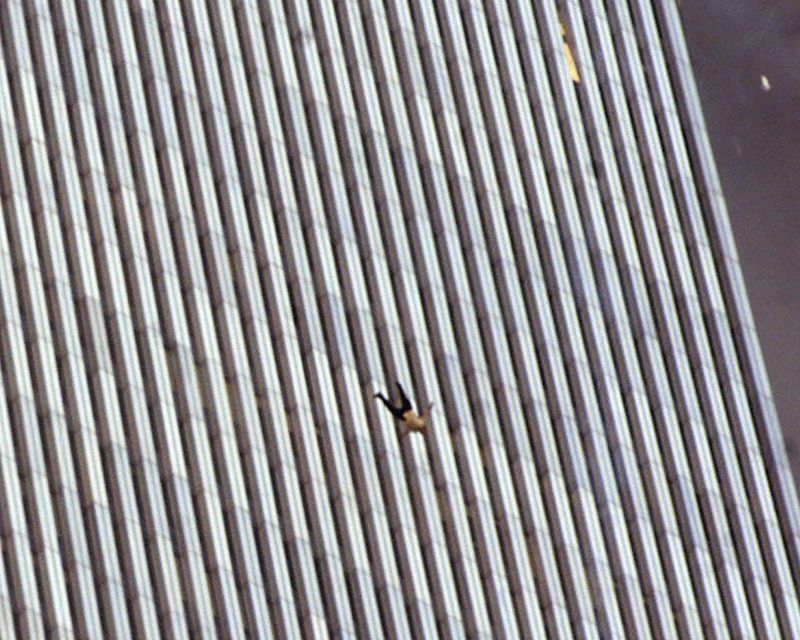
Richard Drew’s poignant photo of a man falling from the World Trade Center on 9/11 humanizes the tragedy’s immense loss.
Though controversial, it compels reflection on individual suffering amid catastrophe, remaining a powerful symbol of that fateful day.
19. Nixon’s Resignation Wave (1974) – Associated Press

Richard Nixon’s double peace signs before boarding Marine One after resigning due to Watergate capture a historic fall.
The gesture, both bold and resigned, reflects a leader’s exit amid scandal, symbolizing accountability in American politics.
20. The Rodney King Beating Footage Still (1991) – George Holliday

A still from George Holliday’s video of LAPD officers brutally beating Rodney King ignited outrage and sparked the 1992 L.A. riots.
It ushered in citizen journalism and racial reckoning, underscoring the role of visual evidence in the pursuit of justice.
21. The Dust Bowl Storm (1930s) – Arthur Rothstein
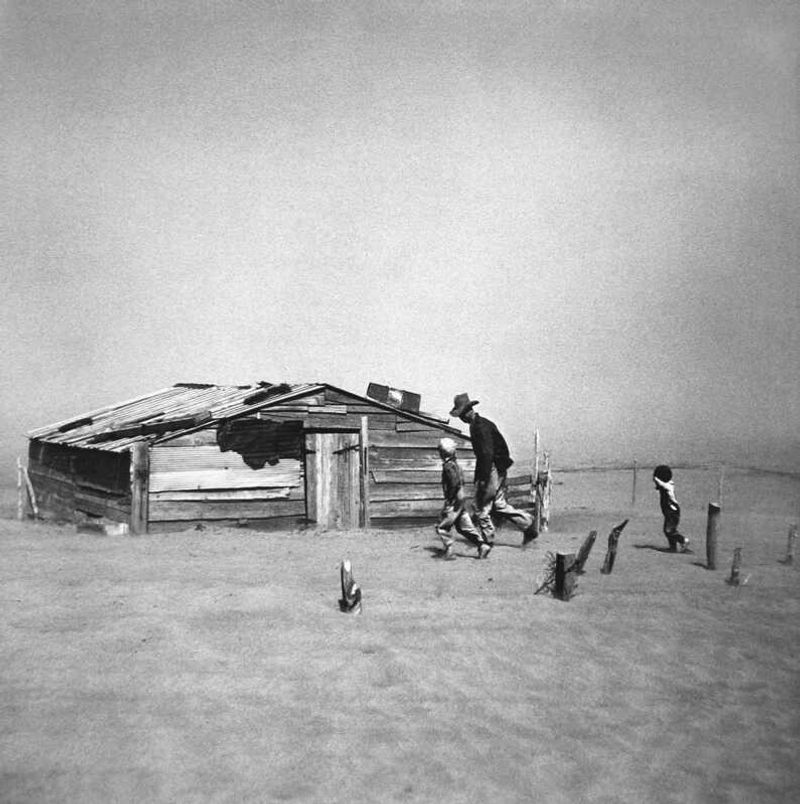
Arthur Rothstein’s image of a farmer and sons braving an Oklahoma dust storm captures the Great Depression’s ecological devastation.
It spurred conservation policies and remains a stark warning of environmental neglect, blending hardship with human endurance.
22. Marilyn Monroe’s Subway Grate Moment (1954) – Sam Shaw
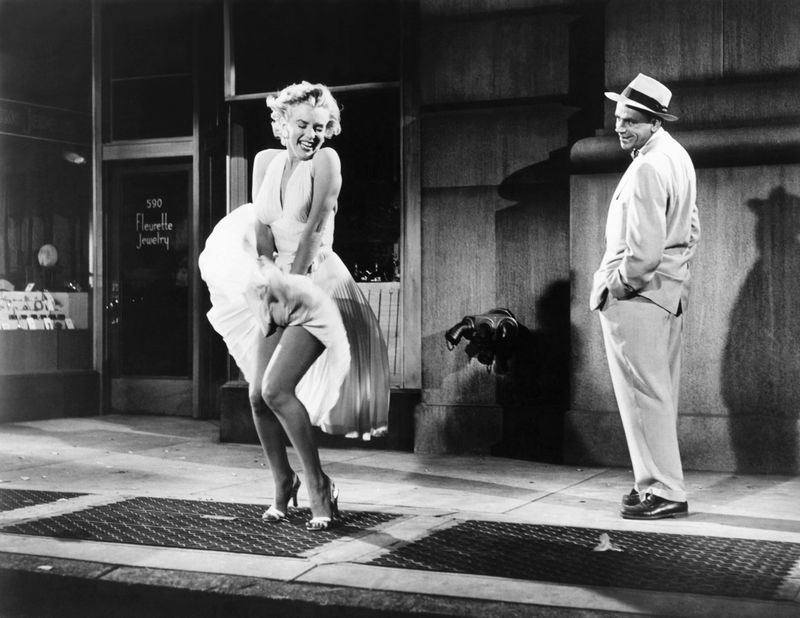
Sam Shaw’s playful photo of Marilyn Monroe, dress billowing over a subway grate during The Seven Year Itch, encapsulates her allure and vulnerability.
A pop culture icon, it defines 1950s Hollywood glamour and Monroe’s enduring mystique.
23. The First Flight by the Wright Brothers (1903) – John T. Daniels
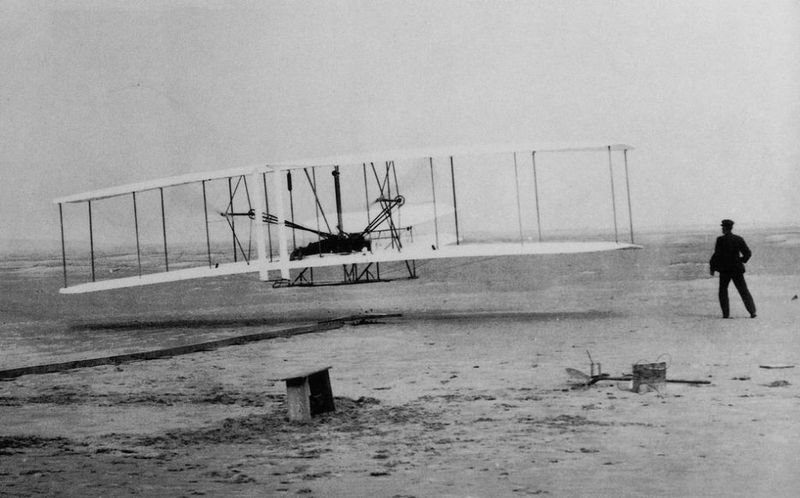
John T. Daniels’ black-and-white photo of the Wright Flyer’s takeoff at Kitty Hawk marks aviation’s dawn.
With Orville piloting and Wilbur alongside, it heralds innovation and ambition, launching an era of global connectivity through flight.
24. Martin Luther King Jr. in Jail (1963) – Associated Press
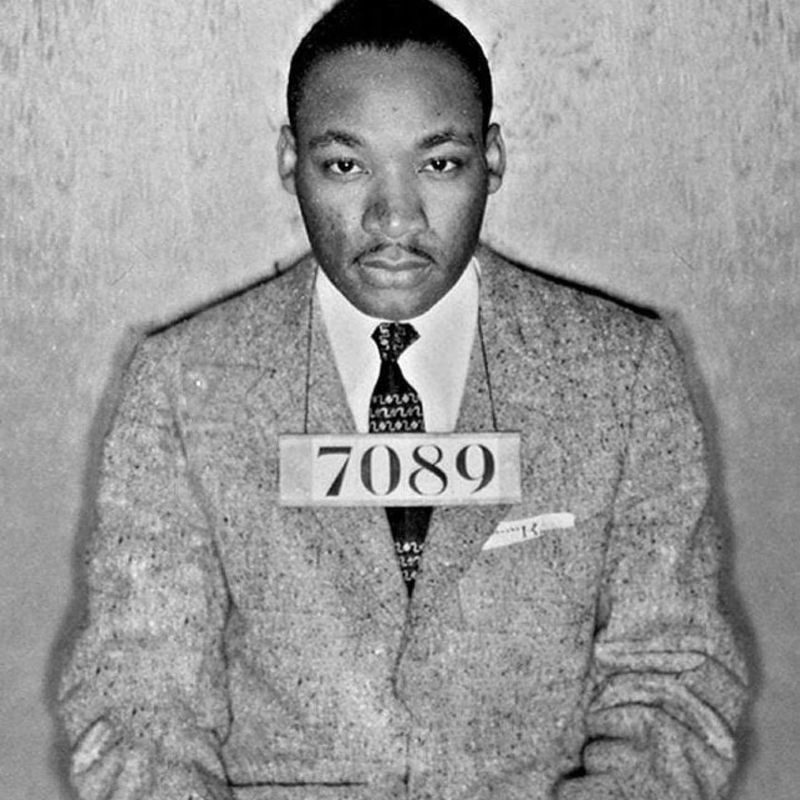
A mugshot of Dr. Martin Luther King Jr. after his Birmingham arrest for peaceful protests reflects the cost of civil disobedience.
His “Letter from Birmingham Jail” became a cornerstone text, and the image underscores nonviolent resistance’s enduring power.
25. The Voting Rights Act Signing (1965) – Yoichi Okamoto

Yoichi Okamoto’s photo of President Lyndon B. Johnson signing the Voting Rights Act, with Dr. King nearby, marks a Civil Rights triumph.
It highlights collaboration between activists and lawmakers, symbolizing progress in the quest for democratic fairness.
26. American Soldiers Landing on D-Day (1944) – Robert F. Sargent
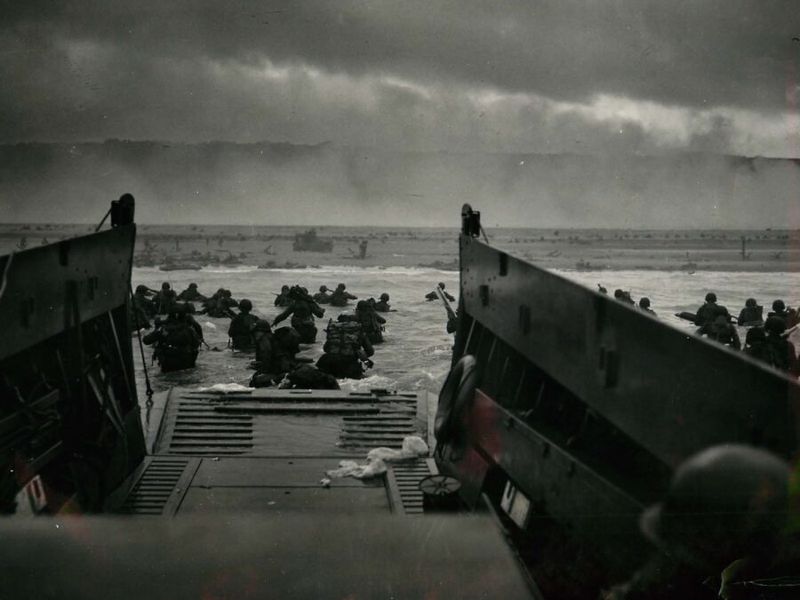
Robert F. Sargent’s visceral image of soldiers storming Normandy’s shores on D-Day captures the bravery and chaos of the Allied invasion.
A revered war photo, it honors the sacrifices that shaped Europe’s liberation, evoking awe and gratitude.
27. The Beatles at JFK Airport (1964) – United Press International
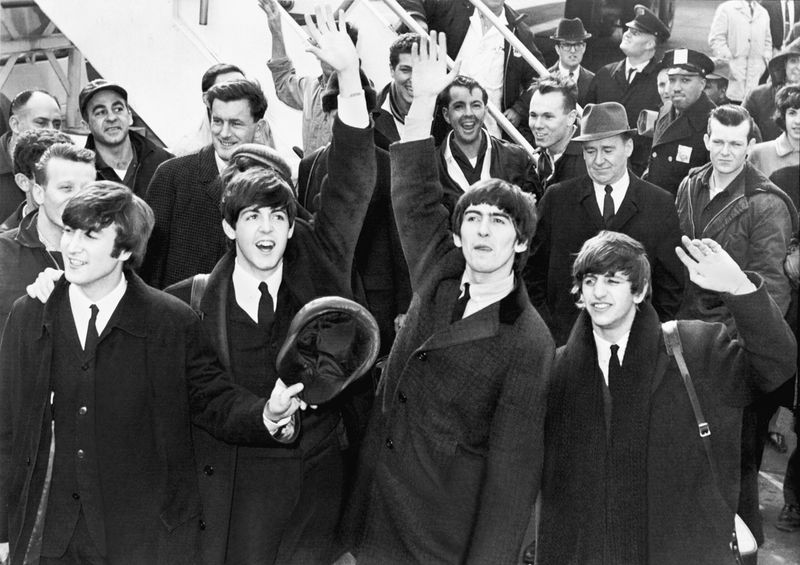
A photo of the Beatles waving to fans at JFK Airport heralded Beatlemania’s arrival, reshaping American music and youth culture.
The Fab Four’s exuberance captures the 1960s’ transformative energy, marking a cultural milestone through music’s universal language.
28. President Obama and the Situation Room (2011) – Pete Souza

Pete Souza’s candid shot of President Obama, Hillary Clinton, and officials monitoring the Navy SEAL raid on Osama bin Laden’s compound reveals the tension of high-stakes decisions.
It captures leadership’s gravity, reflecting the complexities of modern national security.
